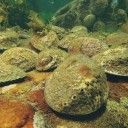
Deep Harvest
After 15 years of the quota management system, most of the deep-sea fish stocks in New Zealand ‘s exclusive economic zone are holding up, but the business of catching and processing the fish becoming steadily more mechanized and efficient. An increasing portion of the harvest—which includes such maintains as hoki (long and thin, towards the top of the picture ), oreo dory (grey, with large eyes) and orange roughly—is now processed entirely at sea on high-tech factory trawlers. Photographers Francois Maritz joined a voyage on one of Sealord’s most modern ships to document a working life on the high seas.

The pursuit of fish has always had a certain romance to it. The possibility of a decent catch holds a timeless appeal, with elements of the hunt, a “free” feed and an escape from the tedium of everyday life into an ocean environment that is often sublime. And fishing is usually restful, or, even better, exciting. Statistics suggest that more than a quarter of the New Zealand population are regular recreational anglers, and most of us feel at least a flicker of empathy when confronted with slogans of the “I’d rather be fishing” variety.
If some fishing is good, wouldn’t more fishing be even better? In the uncomplicated “bad old days” before the quota management system (QMS) was introduced, such reasoning drew many into the more laid-back echelons of the fishing industry. But great changes in the business of fishing over the past decade have shaken off all but the most dedicated.
Commercial fishing today is a tightly regulated, highly competitive business. Employing some 11,000 people, the seafood industry is New Zealand’s fourth-largest export earner, with annual returns of $1.5 billion. Keeping such success afloat is the country’s 200-mile exclusive economic fishing zone (EEZ). At 1.2 million square nautical miles-15 times greater than New Zealand’s land area—it is one of the largest EEZs in the world.
Since 1986, when the country adopted a quota system to conserve the major commercial fisheries within its exclusive zone, New Zealand has become a world leader in the sustainable management of fish resources. Each year the Ministry of Fisheries sets a total allowable commercial catch (TACC) for each species, based on annual stock assessments made using information gathered from research surveys, catch monitoring, ships’ logbooks and landed catches. Seafood companies and individual fishermen own shares of this quota, which they can sell, lease or transfer. Sealord has access to the biggest parcel of quota—about 23 per cent, which amounts to more than 150,000 tonnes of fresh fish, before processing.
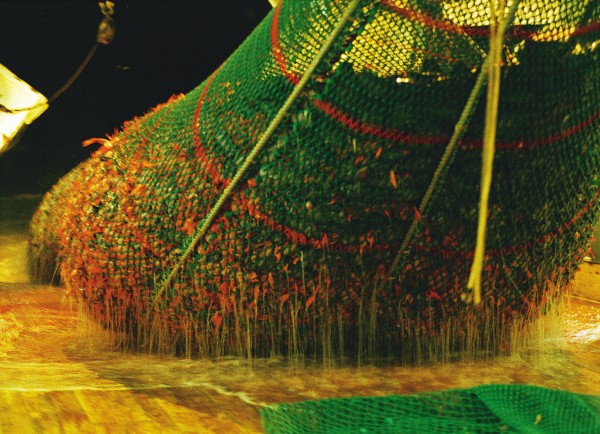
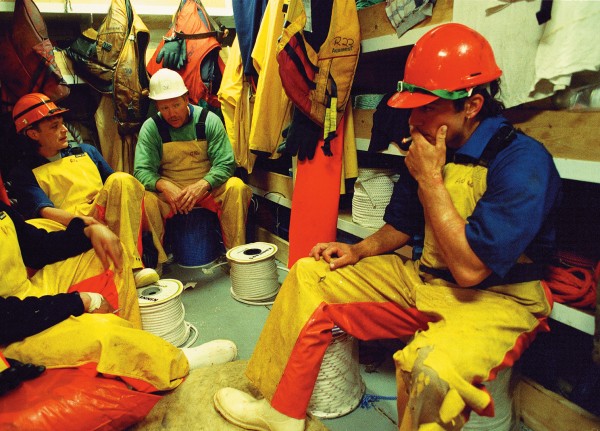
Phil Lough, Sealord’s CEO, says that New Zealand’s deep-sea fishing industry is the equal of any in the world, and that most of our total catch (apart from squid, which has only a six-week season) is caught and processed by local interests.
“The QMS has given us certainty in terms of a ‘property right’ to fish, and this has allowed us to take a longterm view,” says Lough. “Elsewhere in the world, quantity is everything, and the result has been substantial declines in catch rates and major shortages of fish. Here, because of the QMS, we know how many fish we can and will catch, so we can promise customers continuity of supply for decades to come, and concentrate on getting maximum value from every fish.”
The decline in stocks of hake, Alaskan pollock and cod elsewhere in the world has helped increase the demand for our hold, says Lough: “We realised that many customers weren’t just buying fish, they were buying reliability of supply, and that’s where we can make promises that nobody else can.
“Sealord operates a fleet of about 25 vessels—a mixture of factory trawlers, fresh-fish trawlers and bottom longliners—with a workforce of 500 fishing staff. Some of the boats are owned by the company; others are chartered on short-or long-term contracts. Last year, Sealord handled 170,000 tonnes of fish and shellfish, 90 per cent of which was exported.
Increasingly, New Zealand’s fishing industry is controlled by large companies such as Sealord. One of the reasons for the rise of these companies is the fact that many individual fishers chose to sell the quota the government gave them when it introduced the QMS system. Another is that most our fish resources lie offshore, in deep water, accessible only to large, well-equipped and expensive vessels.
Sealord’s Rehua and her sister ship Aorere represent the zenith of the modern New Zealand trawling fleet. Both are Norwegian-built factory trawlers, able to operate in virtually any sea conditions. It is their factory or on-ship processing capabilities that set these trawlers apart from those of even a few years ago.
“Once we used to take whole fish back to shore for processing,” says Lough. “Then we headed and gutted at sea, but brought the carcass ashore. Then we produced skin-on fillets at sea, and later skinned and boned fillets, and now we are doing fish steaks and portions. Some of our products require no further onshore processing at all.”
[Chapter-Break]
A stint on a modern factory trawler quickly dispels any lingering notions about the romance of fishing: it is a relentless, high-pressure experience. Factory staff work six hours on, six hours off, 24 hours a day usually for seven weeks. All minds are focused on meeting the catch targets for the voyage. Payment for the crew consists of a variable salary. Half is paid as a retainer; the balance is calculated on the value of the catch for each trip. Little wonder deck and factory hands try to sign on with the best skippers—those who know the most productive places to fish, have the best-equipped boats and make the fastest turnarounds.
Seamounts and trenches are favoured fishing spots because they tend to harbour large aggregations of fish, but they can also be treacherous. Skilful skippers are better able to skim the fish off the steep sides of a seamount without damaging their gear. Less experienced men stay at a safer distance, but catch fewer fish.

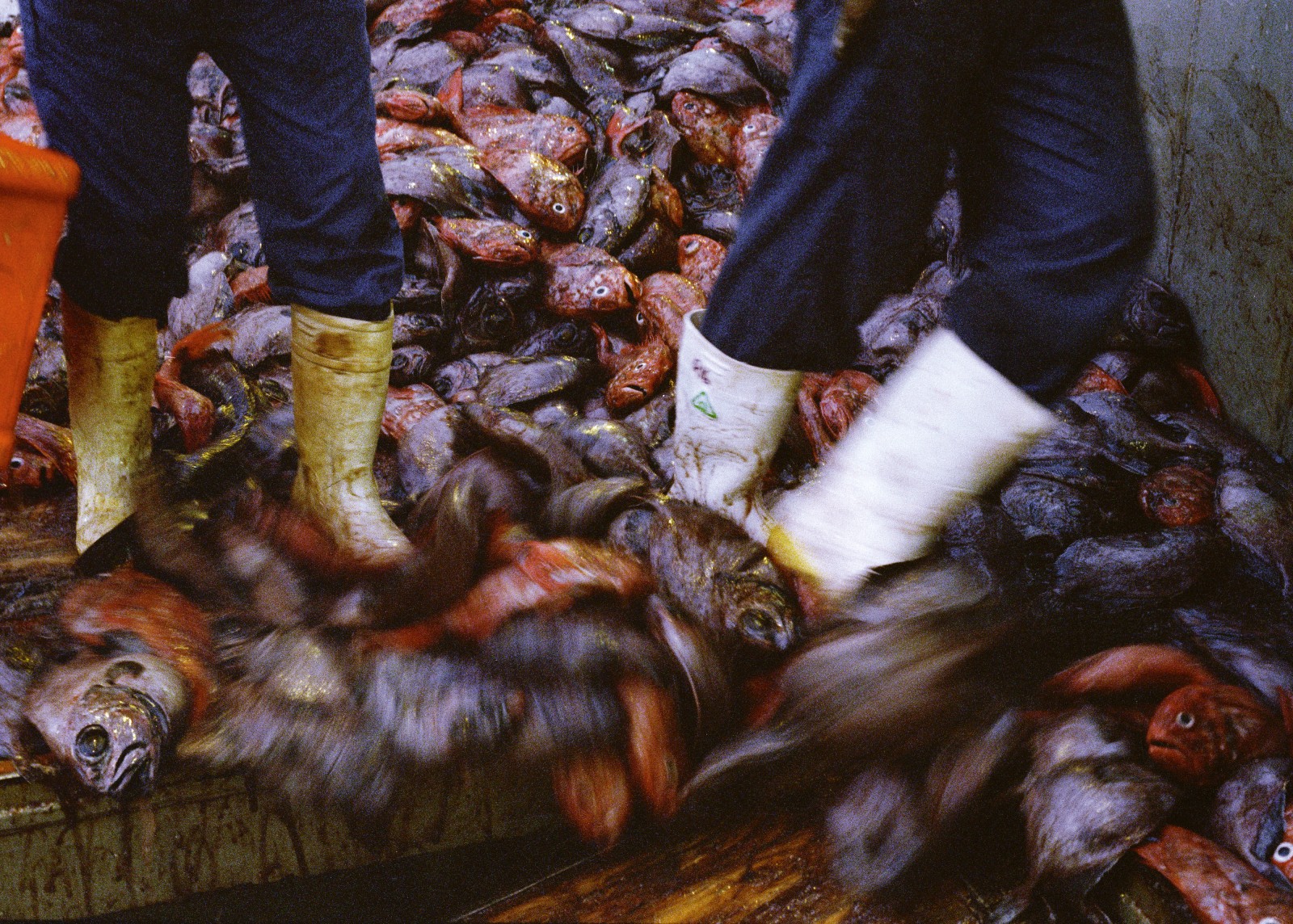
However, even the best skippers can have a run of bad luck. As the days at sea without a decent catch mount up, tension builds. The longer the pickings remain lean, the lesser the likelihood of making the target tonnage before returning to port. As stress levels rise, tempers may fray and arguments break out. Coexistence in the confines of the ship, with little opportunity for solitude, eventually tries even the most gregarious. Add to that the relentless assault on the senses from the ship’s pitching and rolling, the all-pervasive stench of drying fish meal, the constant noise of round-the-clock human and mechanical activity—thrumming from the engine, whining of winches, clatter and hum from the factory machinery, televisions babbling, ghetto blasters pounding—and it is remarkable that there is any amicability at all.
Rehua’s crew numbers around 40, and includes both men and women. Just over half work in the factory, and the remainder operate the vessel and catch the fish. And not just any fish. From the captain’s decision on where and at what depth to shoot the net to the setting up of the factory processing equipment, a particular species is targeted. If fortune smiles, the catch is predominantly of the right kind of fish; inevitably, however, other species get scooped up as well, and sometimes the catch is a thoroughly mixed bag. When a significant quantity of non-target fish come aboard it makes for an unwelcome increase in the processing time.
The net, which has a capacity of 65 tonnes of fish, can fill in a couple of minutes if a dense shoal is snared. Sensors on the net signal to the control room how full it is becoming. At the captain’s signal, huge winches reel in the cables, and the net, like a bulging stocking gushing water, is hauled up the stern ramp and onto the deck.
If the factory hands are still processing the previous catch, this one must be kept fresh in the interim, which means keeping it as close to zero degrees C as possible without actually freezing it. This is achieved by spraying it with liquid ice—water on the brink of freezing—and insulating it with a thermal blanket.
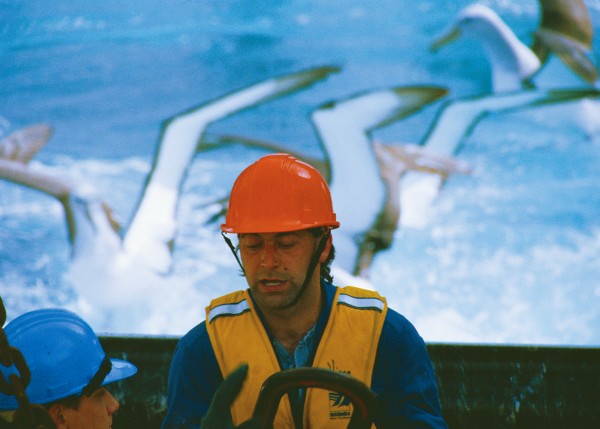
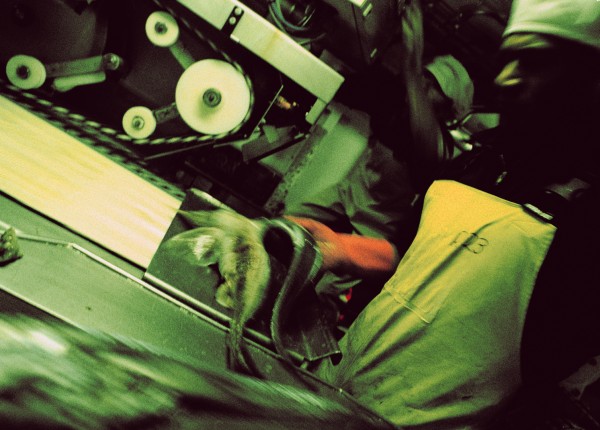
When the factory is ready to receive the catch, flaps in the deck are lowered, the back end of the net is opened and its contents poured into a holding bay containing more liquid ice. From here, the fish are carried along conveyors to the factory.
Workers manning the first section of the conveyor remove odd fish and fillet them by hand. The rest of the catch continues on to the automatic filleting machines, where the flanks of the fish are swiftly separated and skinned. Any remaining traces of anything but pure flesh—a patch of skin, the stump of a fin or a strand of stomach lining—are trimmed by hand. The fillets then proceed to the packers, who sort and pack them according to weight in flat boxes called shatterpacks. These are placed on trays, snap-frozen and stored at minus 30° C.
The leftovers of this process—discarded bones, heads, scales, fins, guts and tails—are dried and ground to fishmeal, for use in animal feeds. Unlikely as it may seem, this is the modern trawlerman’s gold dust—worth less than fillets, but still very valuable ($US800 per tonne), which is just as well, considering the stench produced during its making. The fishmeal plant is near the engine bay, where exhaust heat helps to warm the boiler. The smell it emits permeates every corner of the vessel. Clothes, bed linen, hair, food, cigarettes, drinking water—all become tainted. Fishmeal can be further processed to yield oil, and Rehm can store up to 20,000 litres in its tanks.
The factory can comfortably process a tonne of fish an hour, but must crank through three times that amount when the fishing is good. Deckhands, otherwise idle while they wait for the factory to clear the backlog, may be pressed into service on the conveyor to speed things along. Such blurring of roles is generally not welcomed, but in the interests of speed and money—and perhaps returning to port early—it is a case of all hands to the factory.

The requirements of the factory are often at odds with the vagaries of catching the fish. Skipper Mike Connolly explains: “The ideal, from the point of view of processing efficiency and quality of product, would be to land 10 to 15 tonnes every three hours, but often the flow of fish will be uneven, with more or less being caught at a time.”
With the factory running at full speed, processing 70 tonnes a day (and freezing 25 tonnes of fillets), the ship’s regimented routine, with its round-the-clock six-hour shifts, comes into its own. The canteen, presided over by a single chef, serves food three-quarters of an hour before each shift change, and always offers a choice of breakfast, lunch or dinner. Room-mates—each cabin sleeps two—are assigned different shifts, so see little of each other.
Given the demands placed upon the crew, alcohol is banned. The captain may conduct spot checks for booze any time, anywhere, and to be found in possession is grounds for dismissal. But there is plenty of water: 40 tonnes a day is produced by the ship’s desalination units.
Those who live and work on a factory trawler form a close-knit community with a strong culture of loyalty—to one another, to the captain and to the job—that can appear impenetrable to the newcomer. Only as they accrue a shared history of voyages, weathering the bad times along with the good and demonstrating their ability to adapt to the give-and-take of enforced coexistence, do those new to the game forge the bonds that bring them into the fold.














